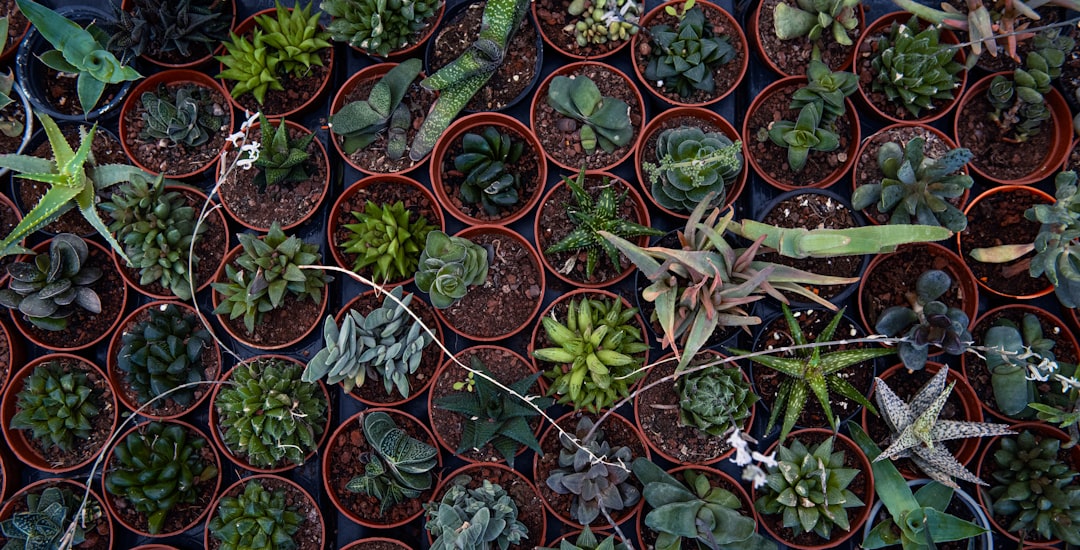Navigating Winter Repotting of Houseplants

Houseplants bring life and beauty to our indoor spaces, and proper care is essential to keep them thriving. One aspect of houseplant care that often raises questions is repotting, especially during the winter months. While winter repotting isn't ideal in most cases, there are certain situations where it may be necessary. In this article, we'll explore when you should and shouldn't repot your houseplants in winter.
First, let's understand why winter repotting can be a challenge. During winter, plants generally enter a period of dormancy. Their growth slows down, and they require less water and nutrients. Repotting a plant during this time can disrupt its natural cycle and cause stress. The roots may not be as active in winter, so they may have a harder time adjusting to a new pot and soil. Additionally, the lower light levels and cooler temperatures in winter can further impede the plant's ability to recover from the shock of repotting.
So, when should you avoid repotting houseplants in winter? If your plant is healthy and showing no signs of distress, it's best to wait until the spring or summer. For example, if your plant has lush foliage, is growing steadily, and has plenty of room in its current pot, there's no need to disturb it. Repotting just for the sake of it can do more harm than good. Also, if your plant is in the middle of a flowering or budding stage, it's advisable to hold off on repotting. The energy that the plant would otherwise use for blooming could be redirected towards recovering from the repotting process, potentially resulting in fewer or no flowers.
On the other hand, there are circumstances where winter repotting might be necessary. One such situation is when your plant has become severely root - bound. You can tell if a plant is root - bound by gently removing it from its pot. If the roots are tightly packed in a circular pattern and there's little soil left in the pot, it's a sign that the plant needs more space. A root - bound plant may show signs of stunted growth, yellowing leaves, or wilting, even when watered regularly. In this case, repotting can give the roots room to spread and access more nutrients and water.
Another reason for winter repotting could be if the soil in the current pot has become compacted or waterlogged. Over time, soil can lose its structure, making it difficult for water to drain properly. This can lead to root rot, which is a serious problem for houseplants. If you notice that the soil takes a long time to dry out after watering or if you see signs of mold or fungus on the soil surface, it may be time to repot the plant into fresh, well - draining soil. However, you need to be extra careful when repotting in winter due to the plant's reduced ability to recover.
When repotting a houseplant in winter, there are several steps you should follow to minimize stress on the plant. First, choose a pot that is only slightly larger than the current one. A pot that is too big can hold too much moisture, which can be a problem for the plant's roots in winter. Next, use a high - quality potting mix that is appropriate for your plant species. Some plants prefer a well - draining cactus mix, while others need a more moisture - retentive soil.
Before removing the plant from its old pot, water it lightly a day or two in advance. This will make it easier to remove the plant without damaging the roots. Gently loosen the roots at the bottom and sides of the root ball to encourage them to spread into the new soil. Place the plant in the new pot and fill in the gaps with the potting mix, pressing it down gently around the base of the plant.
After repotting, water the plant sparingly. Since the plant is in dormancy, it won't need as much water as it would during the growing season. Keep the plant in a location with bright, indirect light and maintain a relatively stable temperature. Avoid placing the plant near cold drafts or heat sources, as sudden temperature changes can also stress the plant.
In conclusion, winter repotting of houseplants should be approached with caution. While it's generally not recommended, there are times when it becomes necessary for the health of the plant. By understanding the signs that indicate when repotting is needed and following the proper procedures, you can help your houseplants survive the winter and thrive in the coming seasons. Remember, the key is to balance the plant's need for space and fresh soil with its natural dormancy cycle during the winter months.